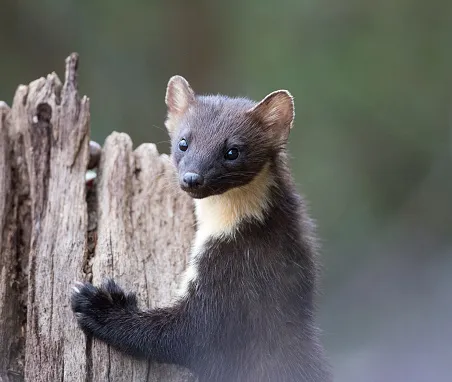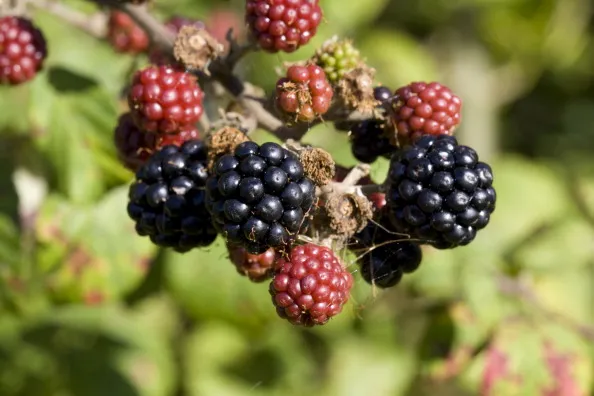Persecution and wide-scale habitat loss has lead to the dramatic decline of the pine marten in the UK, which is now an endangered species.
Although their natural habitat (old growth coniferous and deciduous woodland) is now largely absent from the country, their numbers have been slowly increasing — a fact that has been somewhat surprising and puzzling, until new research shed more light on their behaviour.

Researchers at Queen’s University Belfast have found that when it comes to their diet, pine martens are more opportunistic and adaptable than previously thought.
The study — funded by People’s Trust for Endangered Species (PTES) and published in European Journal of Wildlife Research — showed that although the animals’ diets differed depending on the location, no matter where they were, their eating habits remained the same.
The study was undertaken across the pine martens’ range in Northern Ireland in a variety of habitats, including semi-natural broadleaf woodlands, coniferous plantations, and mixed habitats. The animals’ scat was collected and analysed each month in order to give a detailed picture of what they were eating.
The most common food was found to be fruit, which included rowan, blackberries, and bilberries. These were a particular favourite during late summer to autumn, when the berries were at their most abundant. Songbirds, shrews, grey squirrels, and rabbits were also eaten during each species’ breeding season, when these animals were at their most numerous and vulnerable.

Staple foods of the pine martens were mice, insects, beetles, slugs, snails, and earthworms, which were eaten throughout the year, and supplemented by other seasonally available foods.
The pine martens adaptability in terms of their diet could make all the difference when it comes to the future success, or demise, of this species.
“The gradual increase in their numbers being witnessed – despite landscape limitations — can now in part be attributed to their opportunistic and adaptable diet,” explains Joshua Twining, PhD student from the School of Biological Sciences at Queen’s University Belfast, who lead the study. “Our evidence shows they can adapt and survive in a variety of woodlands, including the immature commercial plantations that make up the majority of the UK’s forest cover, and are not just restricted to their traditional habitat of ancient woodland, which is fantastic news for this species”.
But although pine martens have showed themselves resilient in the face of dramatic changes in their environment, they still need all the support they can get in order to recover.
“Less than 0.1% of Ireland and 2.4% of the UK is made up of ancient woodland, so in order to help bring [European pine martens] back we need to continue to conserve and manage our woodlands to ensure they provide suitable habitats for pine martens, as well as ensuring their legal protection is maintained. If these two aspects are continued, the newfound adaptability of their diet will enable them to survive,” said Nida Al-Fulaij, Grants Manager at PTES.
The pine martens’ recovery in the UK could help to restore the country’s natural balance, as the animals — as with all native species — play an important role in the ecosystem. They disperse seeds, lower the risk of diseases by removing carrion, and could also help manage grey squirrel populations by preying on them, in turn aiding the recovery of the struggling red squirrel.